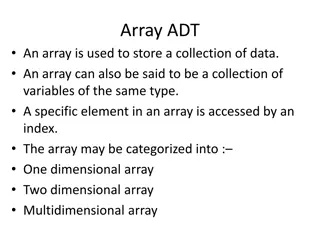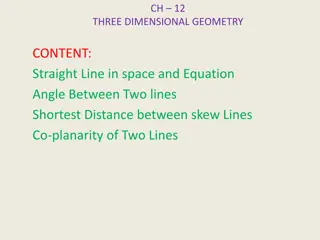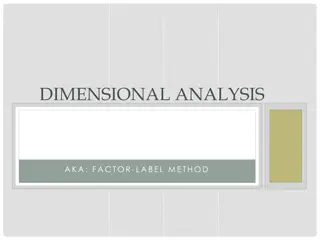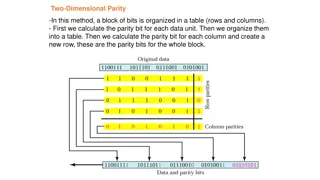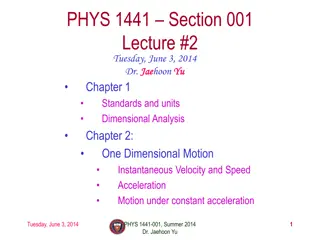
One-dimensional Diagrams for Data Presentation in Animal Sciences University
Learn about one-dimensional diagrams like line diagrams and bar diagrams used for data presentation at Bihar Animal Sciences University, Patna. Explore properties, types of bars diagrams, and tips for creating simple and subdivided bar diagrams.
Download Presentation

Please find below an Image/Link to download the presentation.
The content on the website is provided AS IS for your information and personal use only. It may not be sold, licensed, or shared on other websites without obtaining consent from the author. If you encounter any issues during the download, it is possible that the publisher has removed the file from their server.
You are allowed to download the files provided on this website for personal or commercial use, subject to the condition that they are used lawfully. All files are the property of their respective owners.
The content on the website is provided AS IS for your information and personal use only. It may not be sold, licensed, or shared on other websites without obtaining consent from the author.
E N D
Presentation Transcript
BIHAR ANIMAL SCIENCES UNIVERSITY, PATNA, BIHAR Bihar Veterinary College, Patna UNIT-I One-dimensional Diagrams for Presentation of Data Speaker: Ramesh Kumar Singh Assistant Professor cum Jr. Scientist Division of Animal Genetics and Breeding Bihar Veterinary College, Patna
One-dimensional diagrams (a) LINE DIAGRAM: -It involves only arranging of vertical lines, each vertical line height is equal to its corresponding frequency. The variate values (x) is presented along X-axis on suitable scale and the corresponding frequency are presented on a suitable scale along Y-axis. (b) BAR DIAGRAMS: -It consist of a group of equidistant rectangles one for each group or category of the data in which value or magnitude are represented by the length or height of the rectangles, the width of rectangles being arbitrary and immaterial. The following may be borne in mind to draw bar diagrams.
Properties All the drawn bars should have equal width Equal space may be provided between each bars The height of bars or rectangles should be proportional to their magnitude Bars should be drawn on same plane. It may be horizontal or vertical Magnitude may be written on top of bars Wherever possible bars should be arrange left to right in order of their magnitude
Types of Bars Diagram Simple Bar Diagram:- It is most commonly used one Subdivided or component Bar Diagram:- Sub-divided bar diagrams are useful not only for presenting several items of a variable or category graphically but also facilitates comparisons of different parts or component to the whole.
Following points should be kept into mind The order of different parts or components of bars should be same in all bars. The largest component on the top of bars. Index or key showing different parts having different colour, shades, dotes etc. should be indicated. If should not be used if number of parts exceeds to 10.
Percentage Bar diagram When relative change in component parts are important, then it is used. All bars heights are same. It calculate percentage of each components of bars.
Multiple Bar Diagrams When more than one variables are to be presented, Multiple Bar diagrams may be used. Its drawing is same to that of simple Bar diagram. A set of adjacent bars is one for each variable is drawn proper and equal spacing is given between different sets of the bars. To distinguish between different bars in a set, different colours, shades dotting or crossing may be used. Key or index to this effect may be given.
Deviation Bars - It is also Called as Bilateral Bar Diagrams and used to depict plus (surplus) and minus (deficit) directions from the point of reference. The net Quantities which have both positive and negative values.
Broken Bars - The observation of a variable presents extreme variation, then smaller values of observation appear to small in size in comparison to larger one in form of Bars. Thus Broken Bars are used to present such kind of data graphically.








